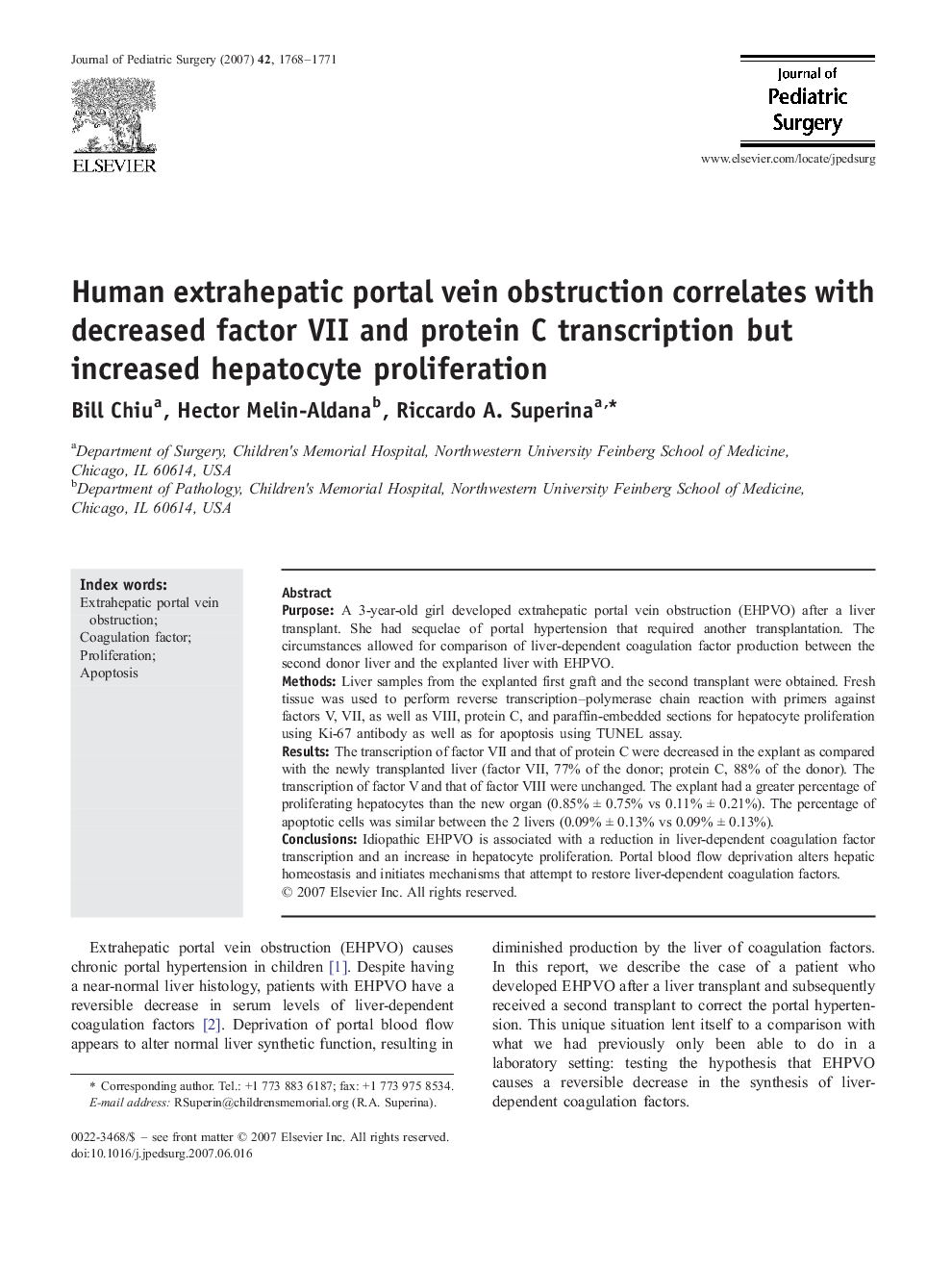| Article ID | Journal | Published Year | Pages | File Type |
|---|---|---|---|---|
| 4160323 | Journal of Pediatric Surgery | 2007 | 4 Pages |
PurposeA 3-year-old girl developed extrahepatic portal vein obstruction (EHPVO) after a liver transplant. She had sequelae of portal hypertension that required another transplantation. The circumstances allowed for comparison of liver-dependent coagulation factor production between the second donor liver and the explanted liver with EHPVO.MethodsLiver samples from the explanted first graft and the second transplant were obtained. Fresh tissue was used to perform reverse transcription–polymerase chain reaction with primers against factors V, VII, as well as VIII, protein C, and paraffin-embedded sections for hepatocyte proliferation using Ki-67 antibody as well as for apoptosis using TUNEL assay.ResultsThe transcription of factor VII and that of protein C were decreased in the explant as compared with the newly transplanted liver (factor VII, 77% of the donor; protein C, 88% of the donor). The transcription of factor V and that of factor VIII were unchanged. The explant had a greater percentage of proliferating hepatocytes than the new organ (0.85% ± 0.75% vs 0.11% ± 0.21%). The percentage of apoptotic cells was similar between the 2 livers (0.09% ± 0.13% vs 0.09% ± 0.13%).ConclusionsIdiopathic EHPVO is associated with a reduction in liver-dependent coagulation factor transcription and an increase in hepatocyte proliferation. Portal blood flow deprivation alters hepatic homeostasis and initiates mechanisms that attempt to restore liver-dependent coagulation factors.
